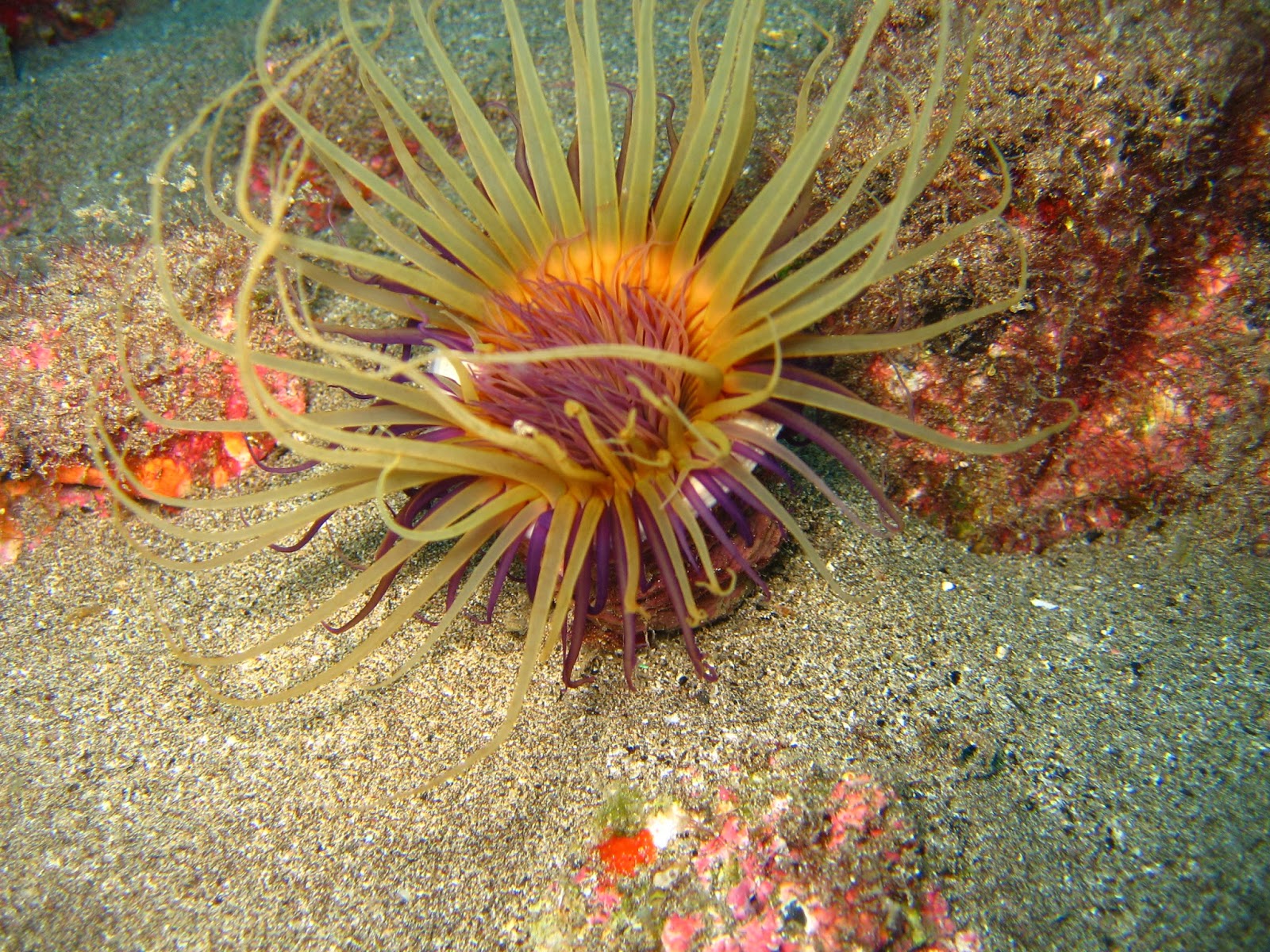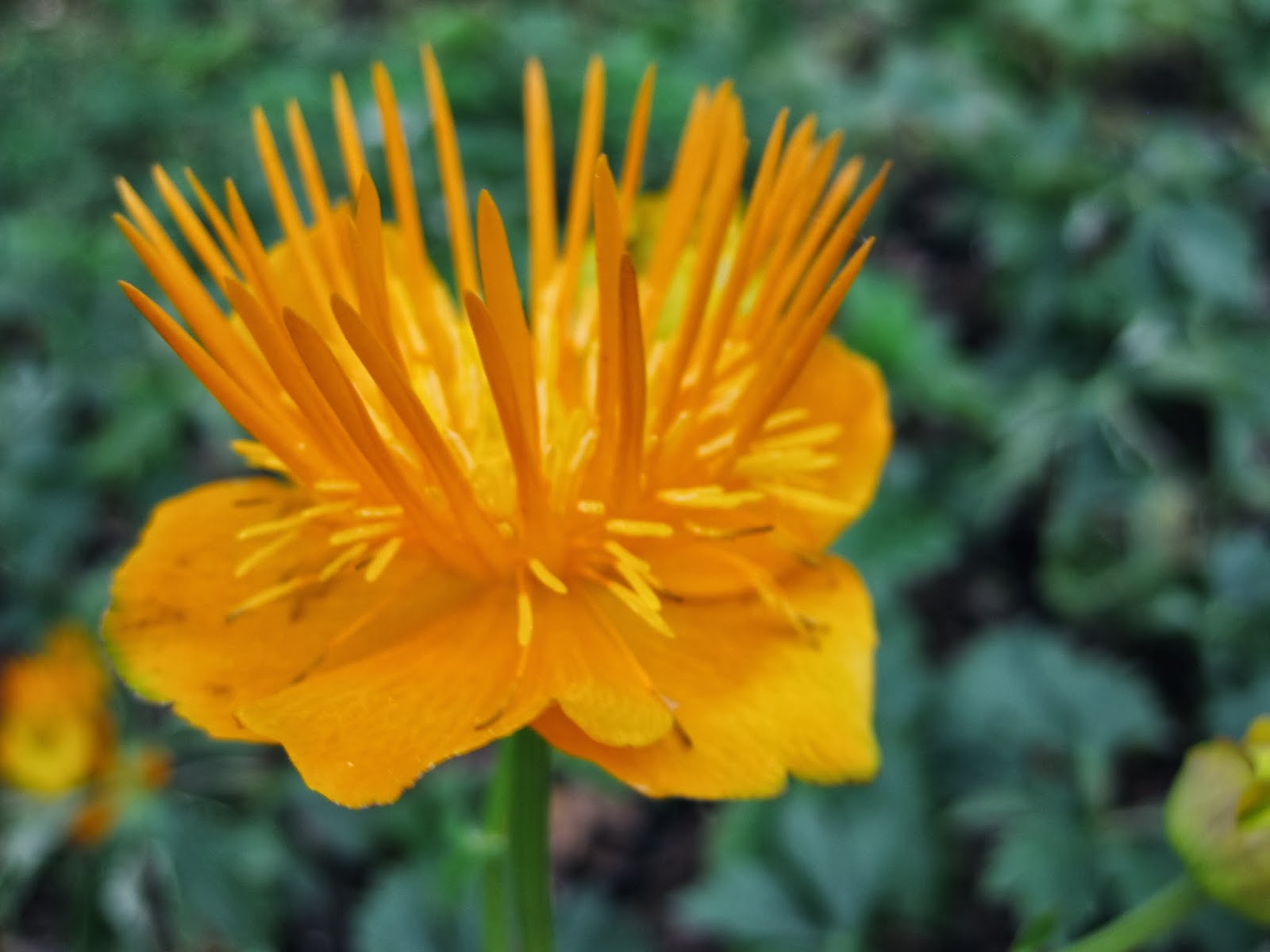Rosy Hardy
is well known as an authority on Herbaceous Perennials. I always enjoy catching up with Rosy
and her husband Rob at Chelsea Flower Show for an indulgent tour of the Hardy’s
Cottage Garden Plants exhibit. As a bit of a shrubby, used to dealing with
woody plants I so admire the delicacy, colour, texture and grace of perennials.
This is a much softer, world where plants drift together in charming
associations.
Of course I
do grow lots of perennials, but in my garden they take their chances amongst
everything else. One day I promise myself that I’m going to learn more. Rosy and I do lots of talks to
gardening clubs and horticultural societies, and we seem to follow each other
on the lecture circuit. Wherever
Rosy has been she leaves gardeners inspired and they all talk about how much
they gleaned from spending a couple of hours with her, and they rave about the
wonderful perennials they bought!
I invited Rosy to share her love of
perennials and gardening with us, and to give us a few tips on how to achieve
success with them. I’m really delighted to welcome her as a guest to the My
Garden School blog
How did you get into perennials in
the first place Rosy, and how long have you been hooked?
Hook on perennials more by mistake
than design. I have always loved flowers from early on in life and loved
wildflowers firstly, knowing all their names wherever we lived: Russia,
Scotland, Hampshire or Northumberland. The latter being my first place for this
interest as I rode either my pony or horse around the countryside. Also being a
nosy person horseback is an amazing place to be able to peer over people’s
walls and hedges and see what they are growing. Even better for being able to
pick the odd plum out of reach from anyone else!
I studied at Writtle Agricultural
College doing Commercial Horticulture specializing in vegetables. A few
positions down the line I ended up digging up my garden and selling plants at
carboot sales in Ascot. Everyone loved the perennials and so it started. My
Sister-in-Law Anne Liverman has an amazing garden, with a collection of superb
perennial varieties, Dove Cottage, Ashbourne, Derbyshire. We were allowed to
lift and split and propagate from here to build up our collection.
So are you and Rob into gardening in
the broader sense? Do you grow your own vegetables for example?
If we had some free time during the
growing year we would be vegetable growers but sadly not to be… but I do have a
gravel garden, which gives me pleasure and I find can be easily maintained with
my busy schedule. Rob is a maniac with the lawn mower and attacks what can
become a hayfield when he can. Our garden is a conglomeration of plants left
over from various exhibits, usually Hampton Court Daily Mail Gardens.
I always think of perennials as
rather hard work. All that lifting, dividing, staking; are they all like that.
Have I got it wrong?
Hard work never hurt anyone??
Seriously they are not hard work if grown correctly and allowed to prosper. At
least if you get them in the wrong place you can lift them Spring or Autumn
unlike shrubs and trees…
Do not over feed them and allow clumps
to become moderately mature before splitting. Make sure that if you have a
mixed border use the shrubs as your growing supports. Remembering to use
techniques like Chelsea chop properly so it is a chop not a snip which means
that the plant is cut to an inch of its life and then will grow far more
compactly. Dead heading as with Roses encourages more flowers and always water
wisely.
What is your number one tip for
gardeners growing perennials?
Enjoy them
People often say to me that they
would love an herbaceous border. Does anyone grow them like that today?
There are plenty of people growing true
herbaceous borders even in the smaller garden and they can still plant in
three’s or five’s. It is getting that layer planting correct whereby you use
the ground wisely with taller plants creating the shade for the lower storey.
Even traditional herbaceous borders
have their keystone plants that were evergreen shrubs, to draw the eye, or used
as a backdrop such as Taxus or Lonicera nitida.
If I you had to choose your three
“Desert Island Perennials” what would they be, and why?
Geum Totally Tangerine
Gaura Rosyjane
Salvia Carradonna
What’s the big “buzz” perennial for
this season?
Now if I had a crystal ball I would be
a very rich plants-woman….
Lets say all 3 of my new introductions
from British breeders:
Gaura lindheimeri 'Freefolk Rosy' Bred here at Hardy's a continuation of the breeding program we have with Gaura.
Eryngium 'Neptunes Gold' a fabulous large flowered form with golden yellow foliage and bracts but still the electric blue stems and flowers a winning combination.The breeder is a mystery at present but definitely British.
Trollius 'Dancing Flames' a new introduction from 'Fairweathers' nursery in Hampshire.
We’ve seen lots of perennials
trending in recent years: echinaceas, heucheras, agapanthus. What’s still in and what’s had its day?
These trends are because the
breeders can get so many different colour variations into these plants, making
it possible for people to want any new variant available, whether it is good or
not.
I am not so keen on trends; plants
that stand the test of time are always to be appreciated first, as gardeners
will be successful.
Here today gone tomorrow plants tend to
be grown more in containers and a lot of these trending plants are grown this
way and treated more as disposable or annual planting.
I know that you supply lots of fab.
perennials to the show gardens at Chelsea Flower Show. How do you know they
will flower on time?
The truth we don’t!
We have to grow about 3 times the
quantity required and give them various treatments such as heat and
supplementary lighting. Sometimes it is potting up at different times and
stages in their development that makes the difference. It all comes down to
knowledge of the plant material and a great awareness of plant physiology. An
awful lot is to do with observation of what the plant is doing and then timing
treatments accordingly.
What are your other guilty pleasures
apart from herbaceous perennials and gardens?
That will be Scuba diving,
Champagne, and lunch with girlfriends.
Follow Hardy’s Cottage Garden Plants
on Twitter:
Like the Hardy’s Cottage Garden
Plants Facebook Page:
.jpg)


.jpg)
.jpg)
.jpg)






















.jpg)











.jpg)

.jpg)
.jpg)



.JPG)

